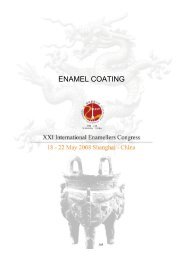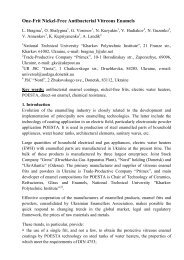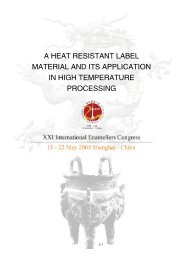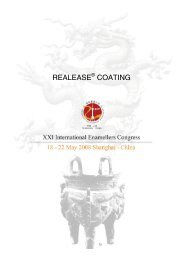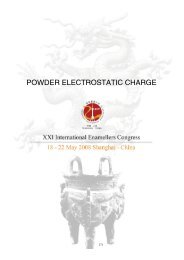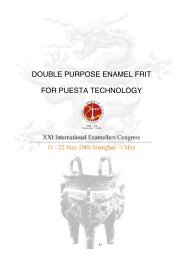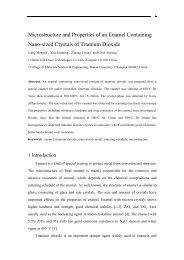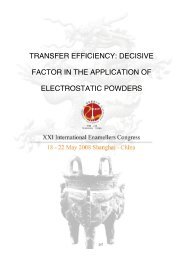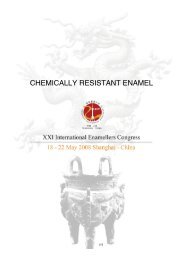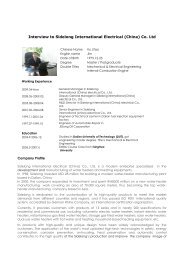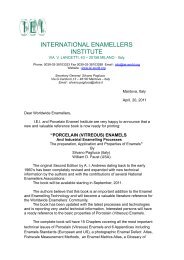High-strength Low-alloy Heat-treatable Steels with Good Enamel ...
High-strength Low-alloy Heat-treatable Steels with Good Enamel ...
High-strength Low-alloy Heat-treatable Steels with Good Enamel ...
You also want an ePaper? Increase the reach of your titles
YUMPU automatically turns print PDFs into web optimized ePapers that Google loves.
formed at higher temperatures which promotes the formation of a martensitic or bainiticsteel structure and therefore higher <strong>strength</strong>. Time has the same, however, smallerimpact as the above mentioned firing temperature. <strong>High</strong>er firing time gives the structuremore time to form austenite. Due to the fact that this is a steel micro<strong>alloy</strong>ed <strong>with</strong> Ti andV, the possibility of <strong>strength</strong>ening through precipitation of Ti and V carbonitrides isanother domain. With an increase in time the harder precipitations can distributethemselves subtly thus creating a stronger microstructure. In general, a raise intemperature and/or time decreases the ductility and fracture strain of the material.The typical mechanical characteristics of the air-hardenable enameling steel EH800before and after enameling are:As-delivered: YS: 280 - 400 MPa TS: 450 - 570 MPa El: 24 - 30 %After enameling: YS: 500 - 650 MPa TS: 700 - 900 MPa El: 15 - 23 %3. <strong>Enamel</strong>ability of air-hardening steel EH800Among the basic requirements of a good enamelability of steel sheets is a resistance tothe formation of “fish scale” defects, caused by an excessive quantity of hydrogen at theinterface steel/enamel. The excellent fish-scale resistance of EH800, even in doublesideenameling of hot-rolled sheets, has already been reported on in a former paper [1].The primary cause of this is the increased content of precipitation products in the formof titanium and/or vanadium carbonitrides in the microstructure of the steel, effectivelyserving as hydrogen traps.The enamel adhesion on EH800 is comparable to conventional enameling typeDC04EK, if appropriate pre-treatment is provided. Nevertheless, in a few cases ofindustrial tests, an insufficient enamel adhesion was noted. Therefore, a researchprogram to investigate the fundamental factors influencing the enamel adhesion onEH800 sheets was started in co-operation <strong>with</strong> the Monash University, Australia. Themain results of the tests are summarized in the following sections.4. Investigation of enamel adherenceThe basic idea of this research program was to observe processes and phenomena<strong>with</strong>in the enamel and steel and link changes to specific manufacturing parameters aswell as macroscopic properties (in essence adhesion).The examinations were performed <strong>with</strong> the variation of the following parameters:• Steel quality - EH800 and DC04EK as comparative material• Firing temperature - 820°C or 870°C3 von 14



